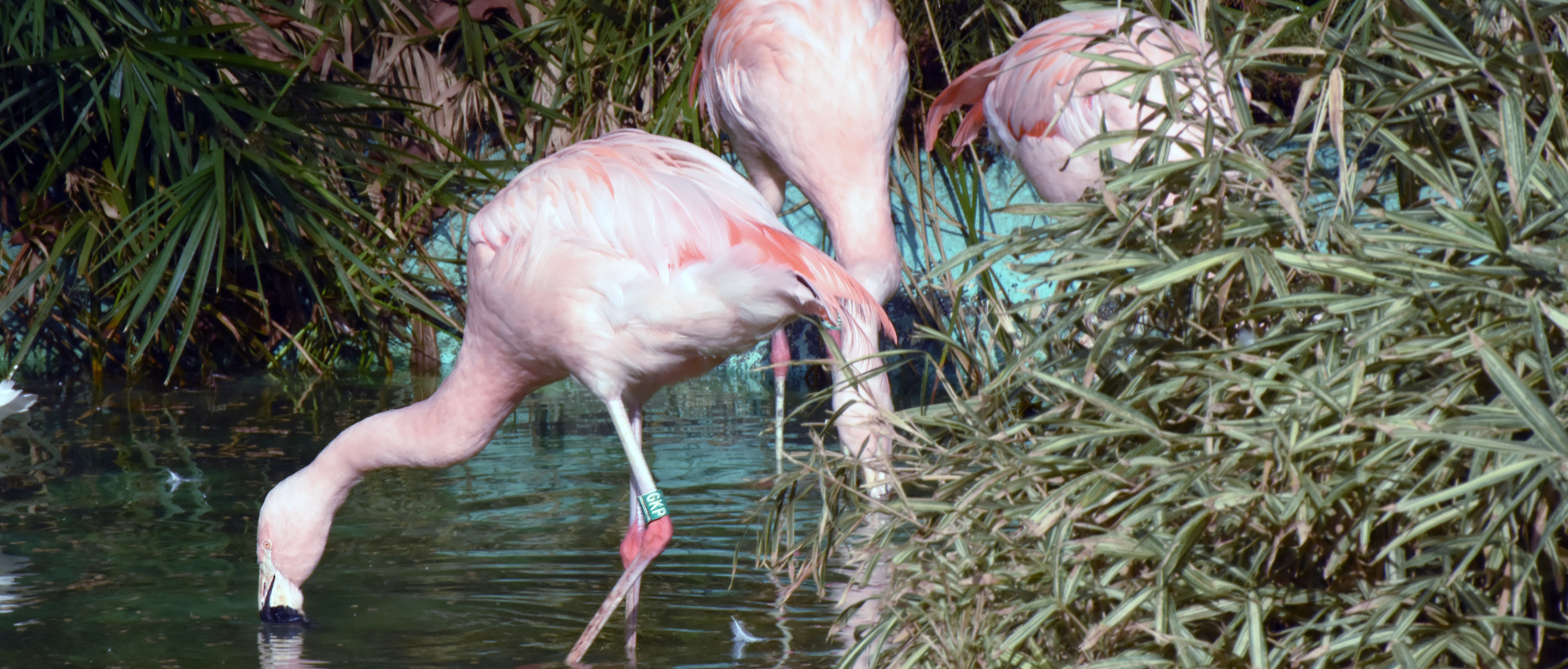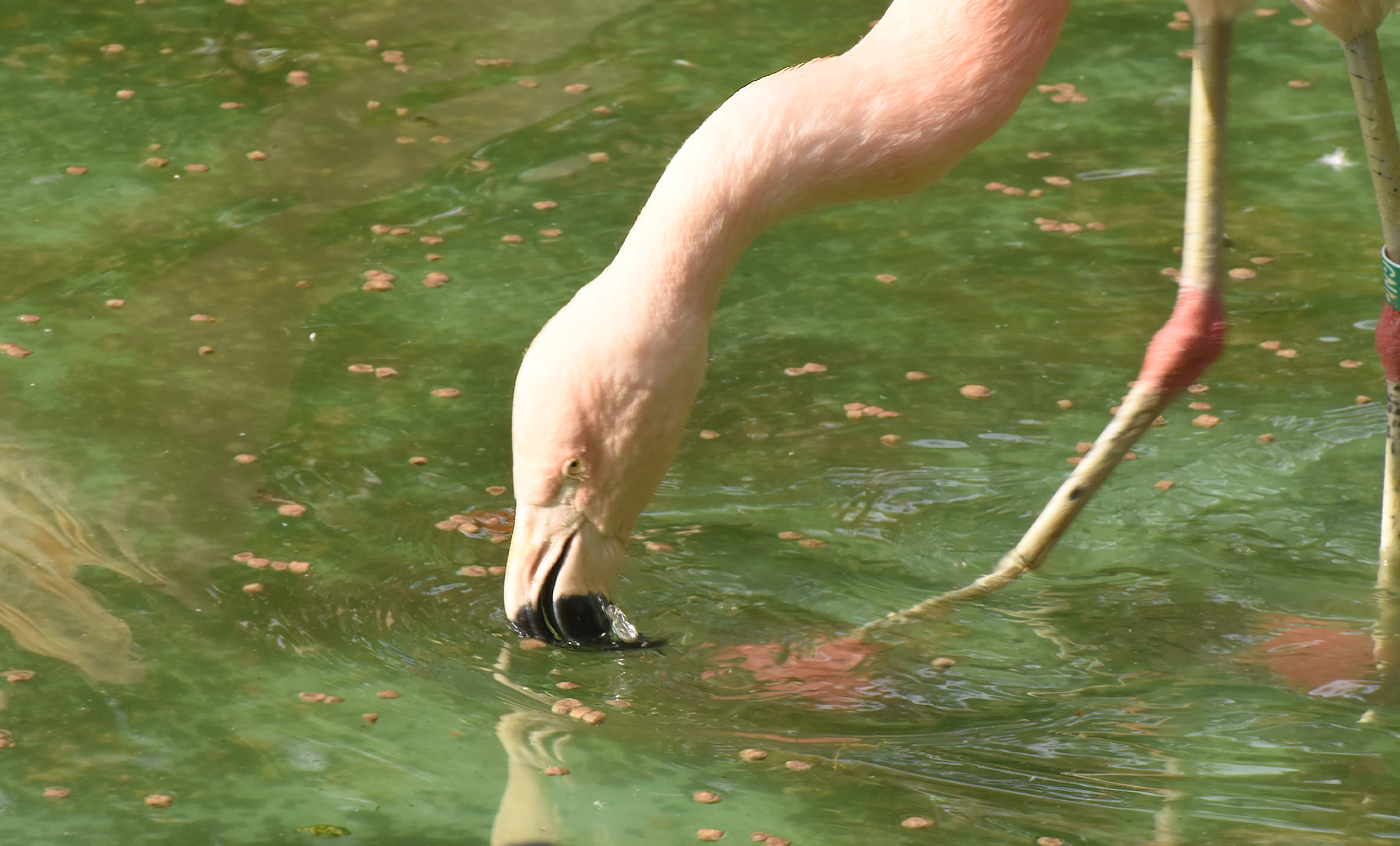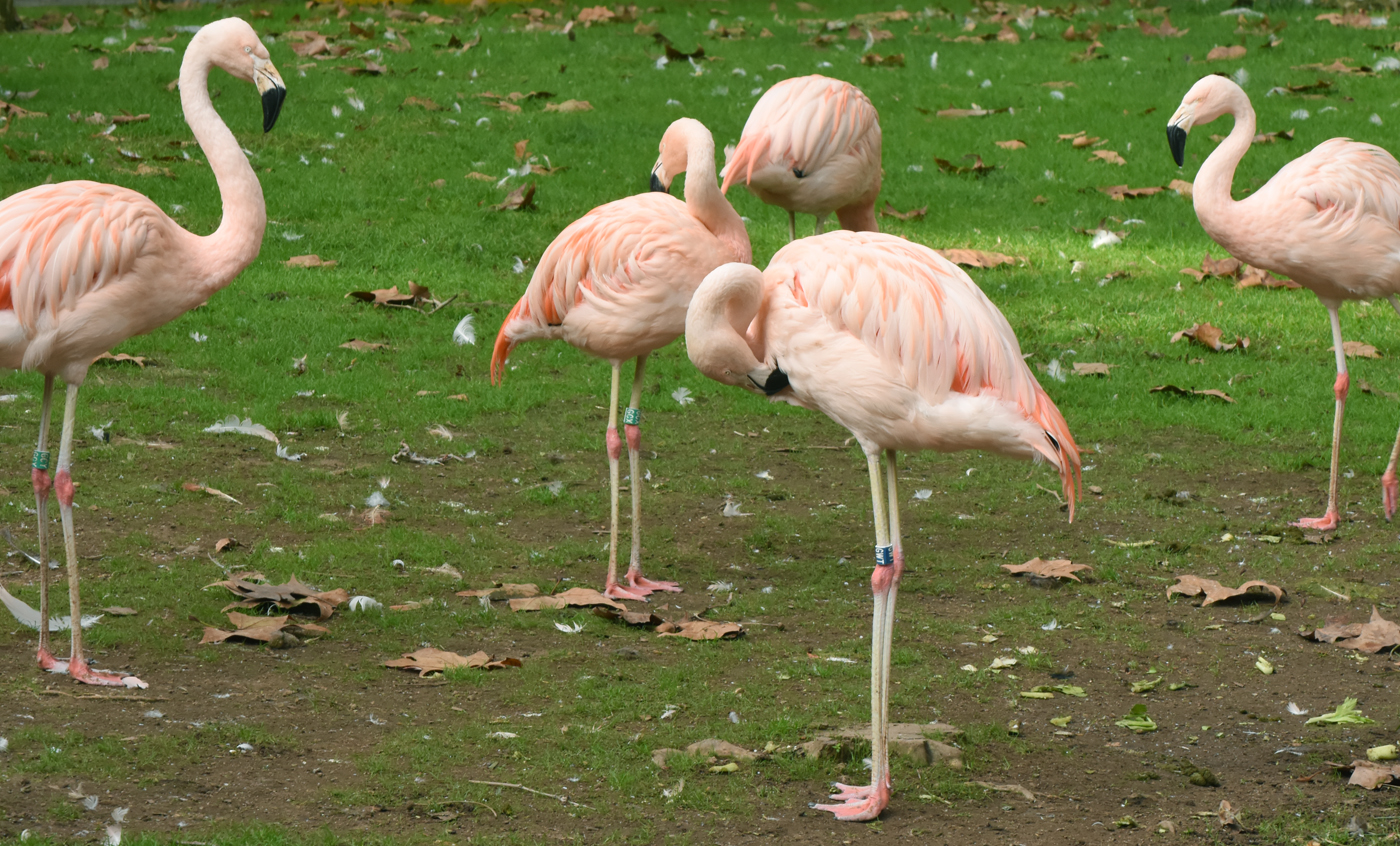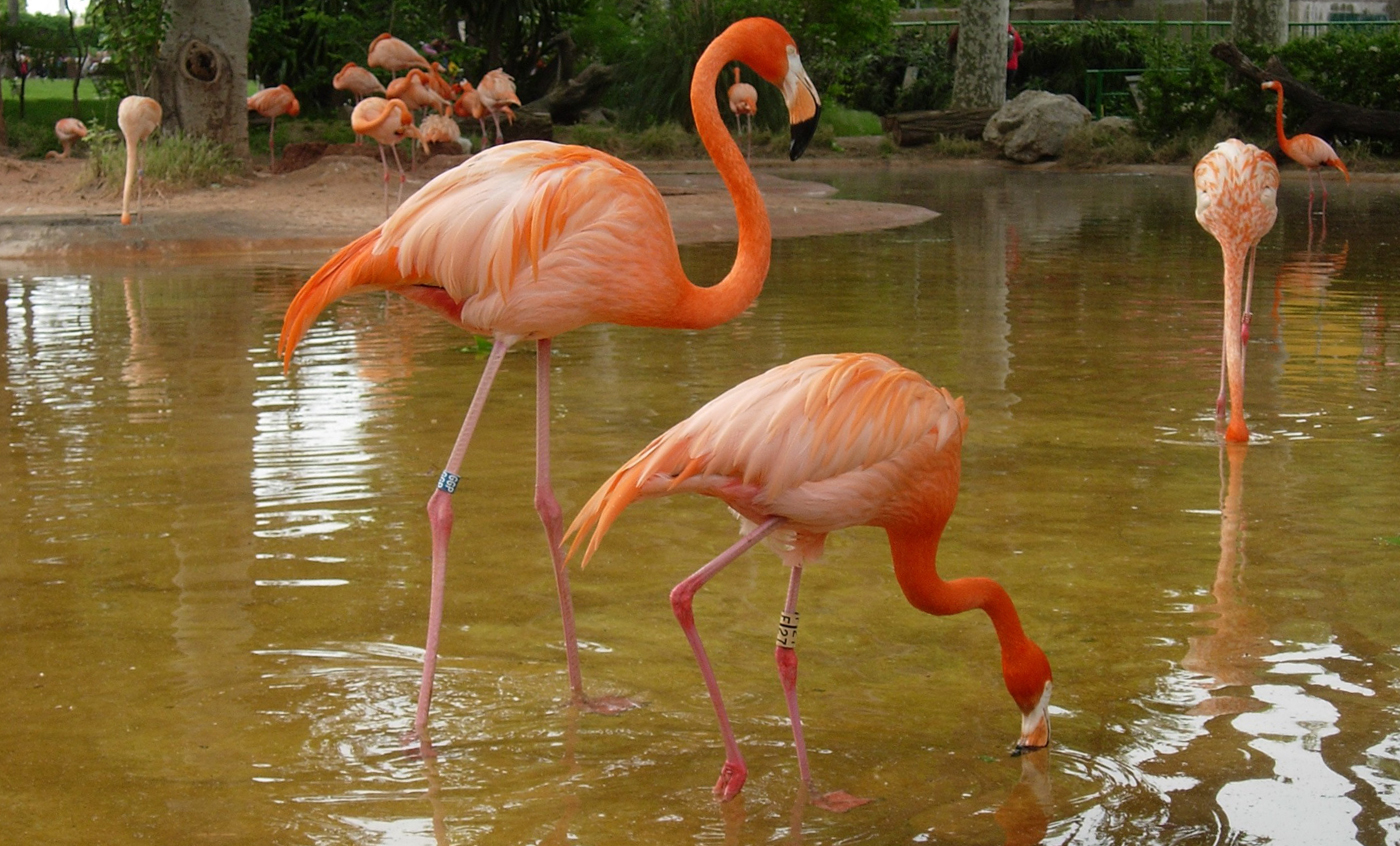Chilean flamingo
The Chilean flamingo lives on the coasts, salt marshes and lagoons over most of South America, from Peru and Uruguay all the way to Tierra del Fuego. It differs from the American and common flamingos in that it has grey legs with pink joints and feet. It is the most abundant species in South America as it is spread over a very wide distribution area. The largest flocks congregated in the lakes of the altiplano or plateaux of Bolivia.
Natural habit
Argentina, Bolivia, Brazil, Chile, Paraguay, Peru and Uruguay.
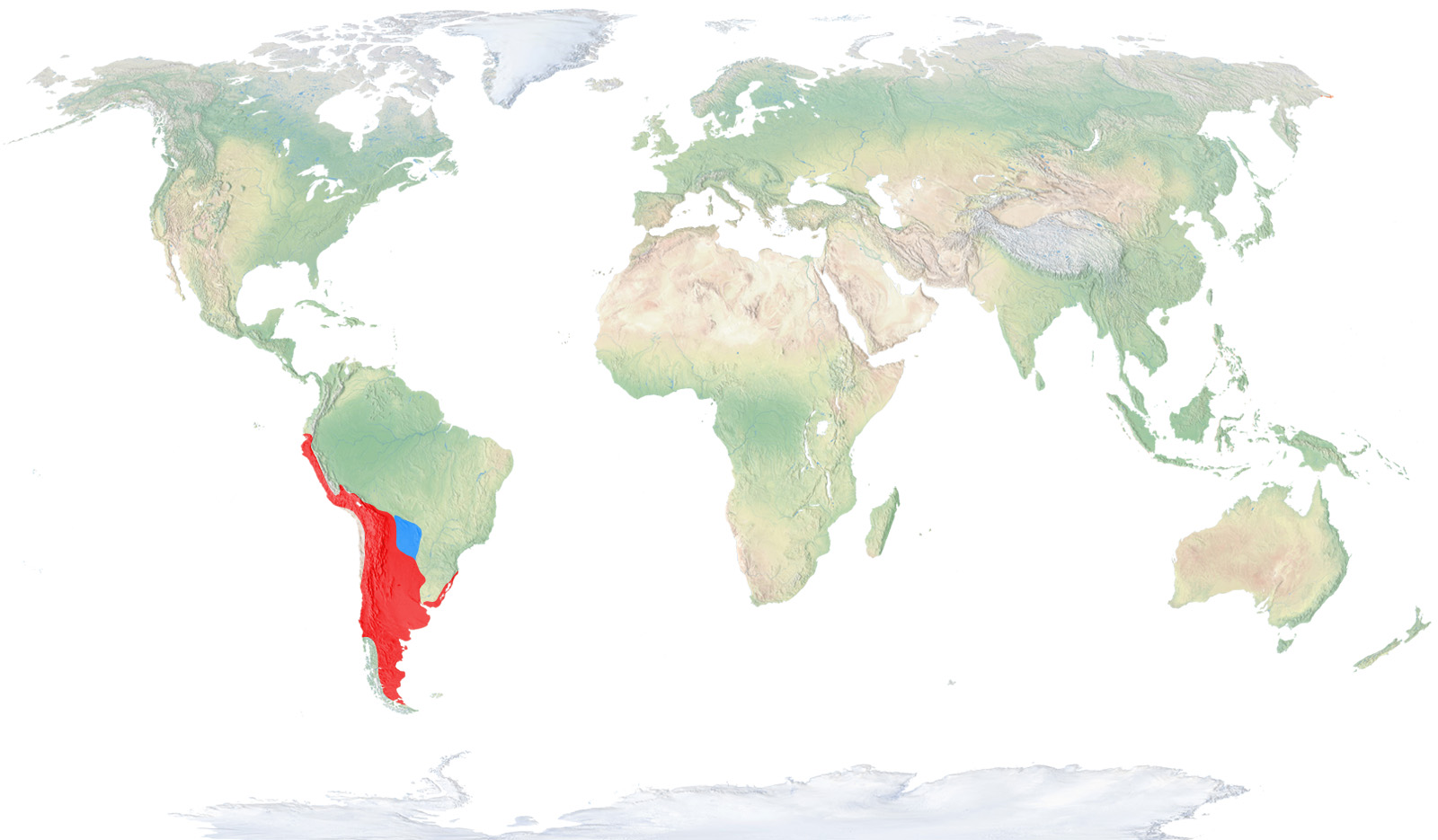
- Distribution / Resident
- Breeding
- Wintering
- Subspecies
Risk level
- Extint
- Extint in the wild
- Critically endangered
- In Danger
- Vulnerable
- Near threatened
- Minor concern
- Insufficient data
- Not evaluated
Taxonomy
Physical characteristics
Biology
Reproduction
Biology
The Chilean flamingo is a species that closely resembles the common flamingo that lives in our lands, as both have predominantly pink plumage, a broad bill with a black tip and are the same size. However, they can easily be distinguished by the colour of their legs: totally red or pink on the common flamingo and grey with pink knees and feet on the Chilean flamingo.
It is found from the highlands of central Peru and Bolivia and south to Tierra del Fuego, generally in mountain lakes, but also in lowlands at times.
The special structure of its bill is related to feeding, as this strange bill is an authentic filter that lets the animal capture small crustaceans, larvae, blue-green algae and other microorganisms that it obtains by sifting through the muddy bottoms of the salt-water lagoons it inhabits.
This bird is very sociable and forms large colonies, especially during the breeding season. Nests are made of mud and are shaped like small hillocks and are built very close to each other. The single whitish egg is incubated for 28 to 30 days by both parents. The chicks, like what happens with other flamingo species, are fed a fatty substance produced in adults’ stomach and gullet during their first days of life.
Resident in a large part of its area of distribution, although it can behave as a partial migrator in some points of northern Argentina and Bolivia.
The Chilean flamingo is the most abundant species living in South America and also has the largest area of distribution. Populations are calculated at some 300,000 individuals and the most important concentrations are found in high-plateau lakes in Bolivia.



